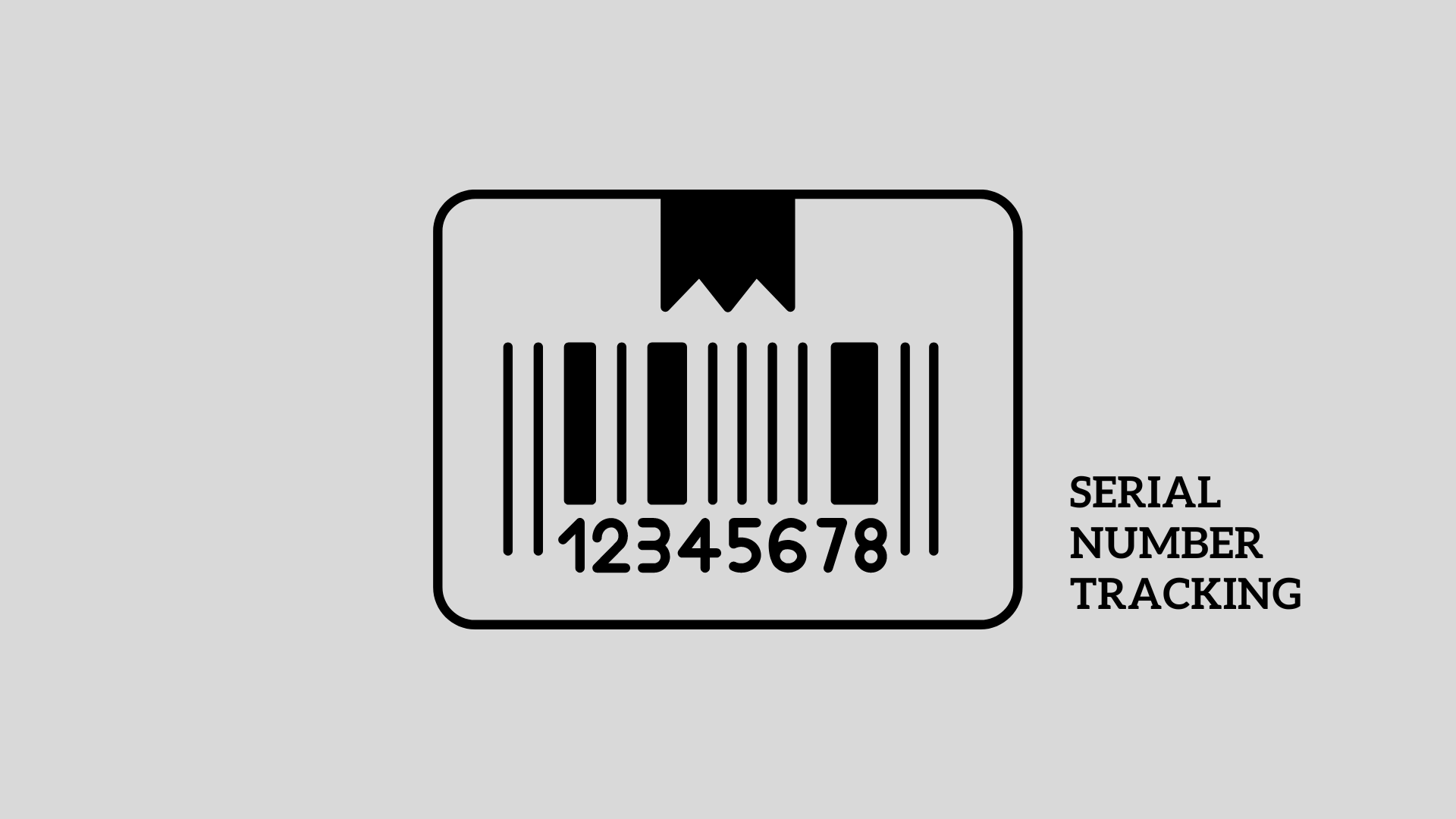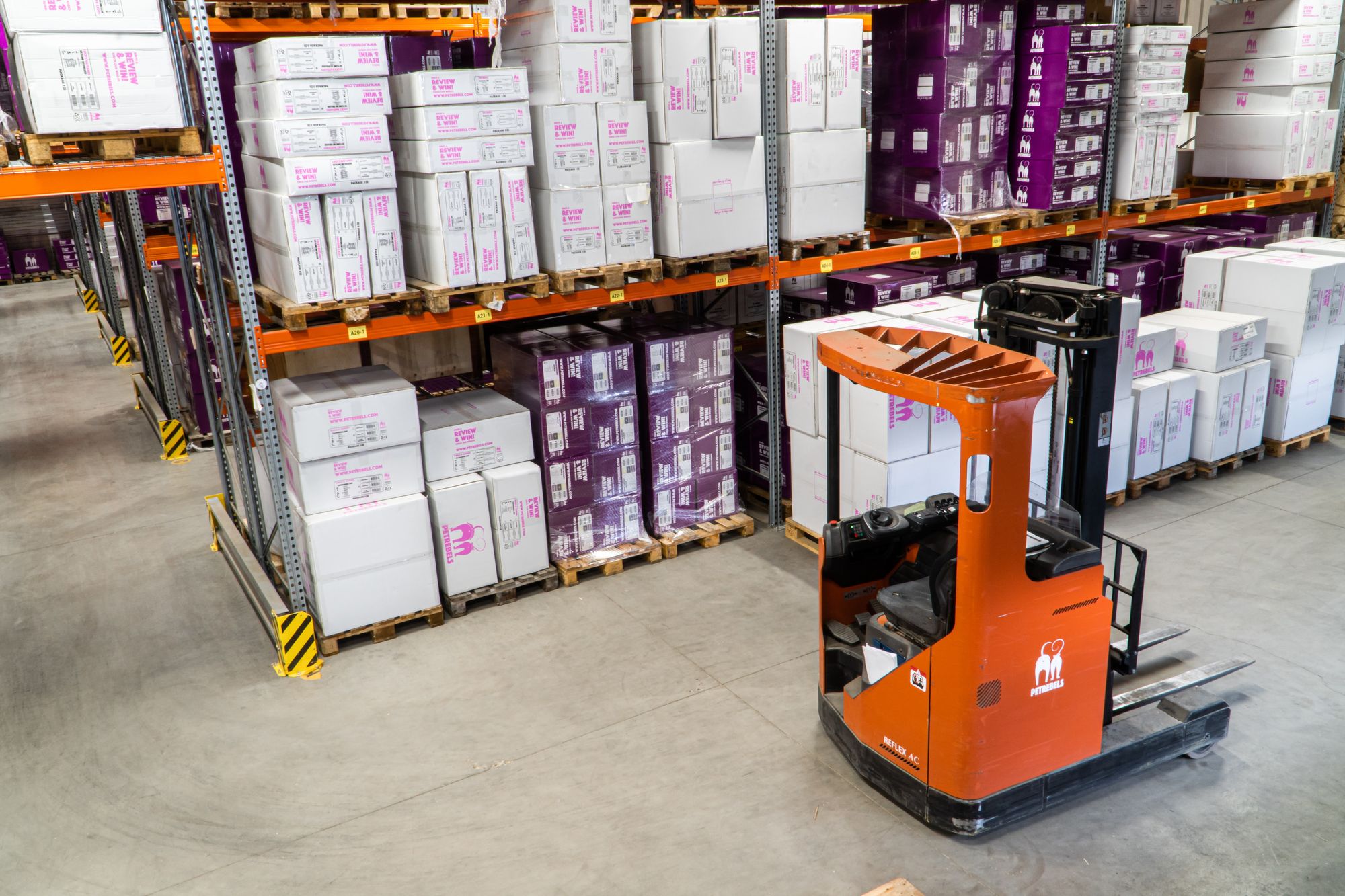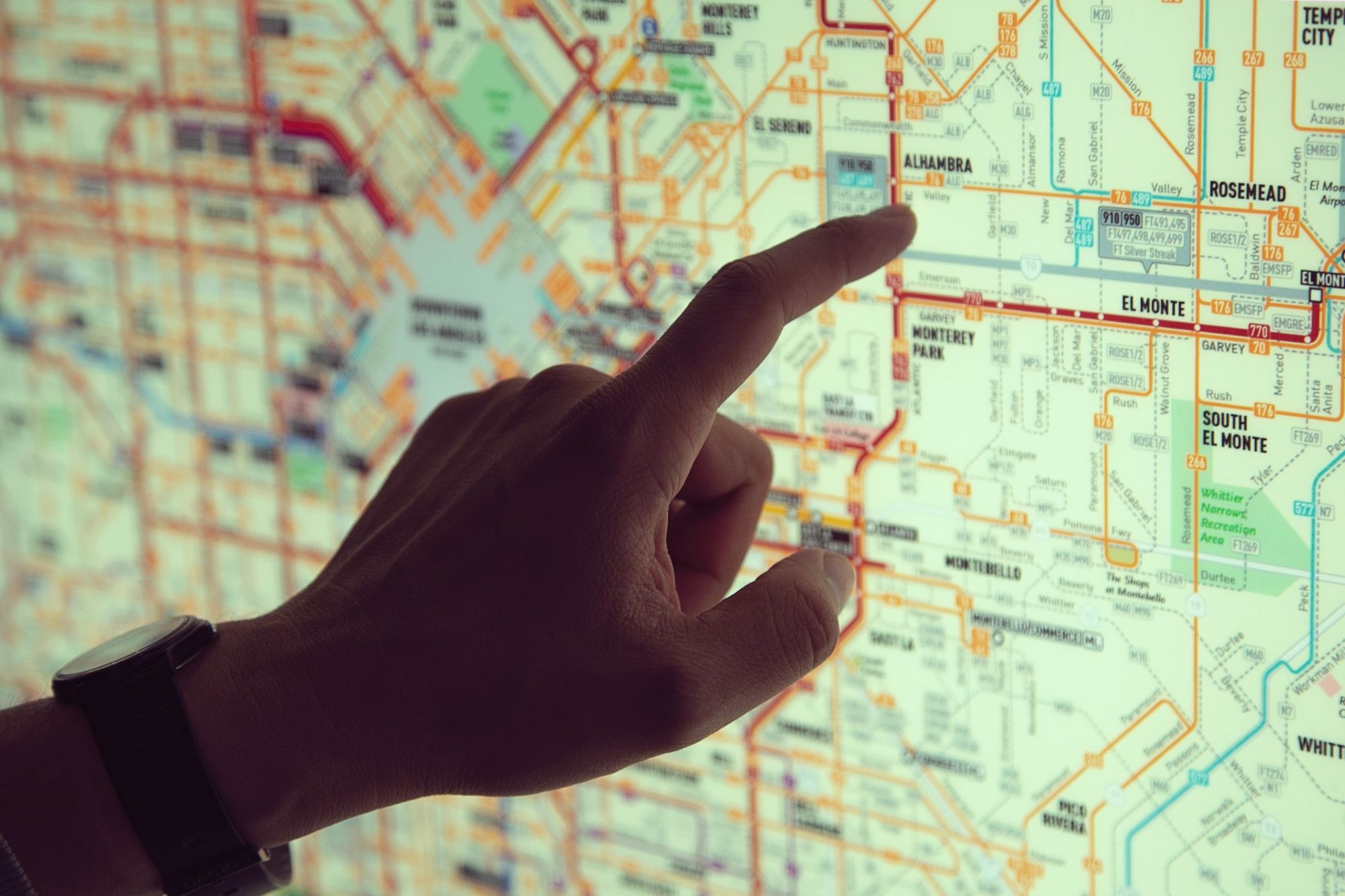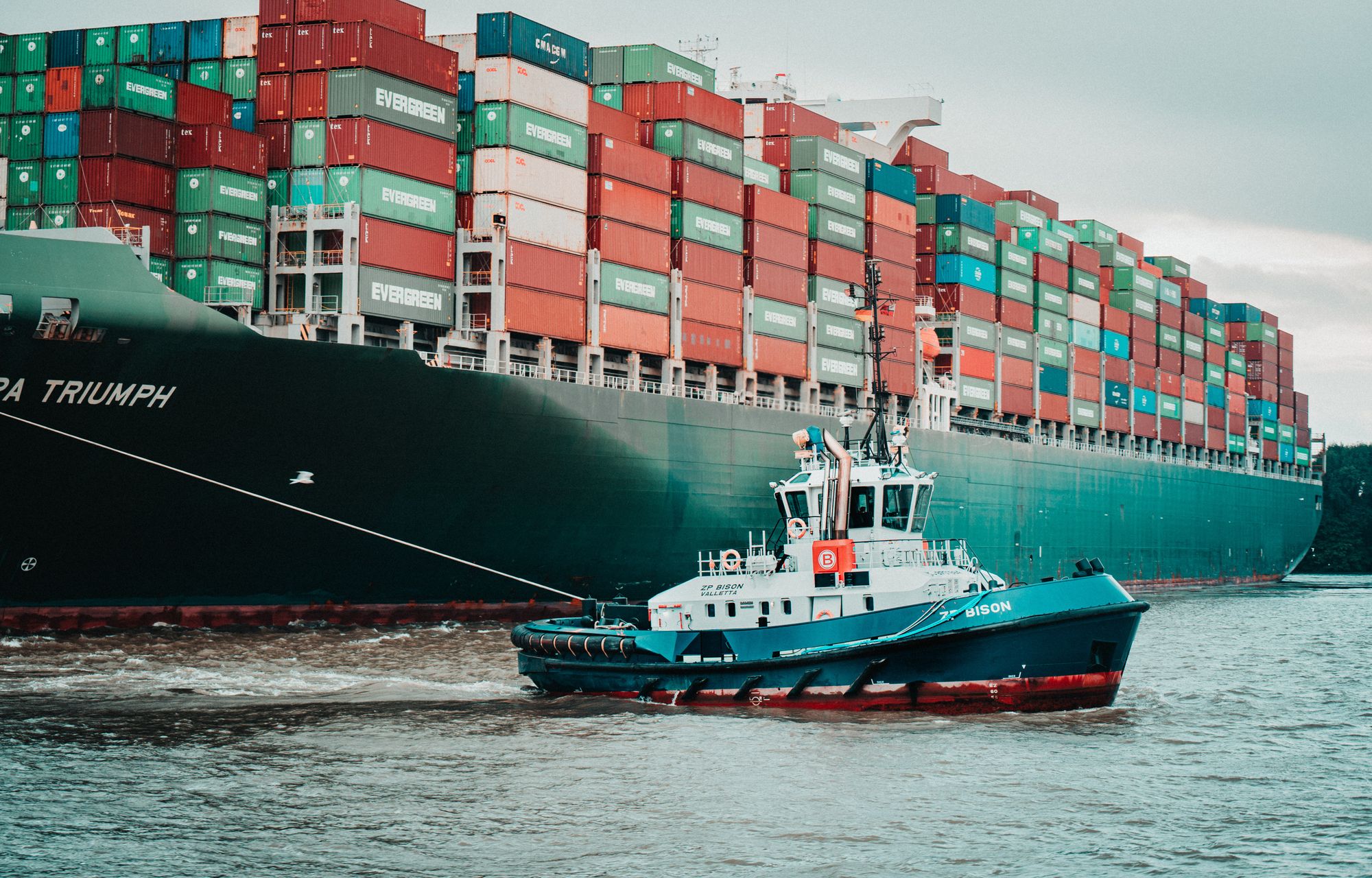Your business depends on quality products. But what if you don’t know where your products are all the time?
Product traceability is tracking a product's movements from manufacturing to the point of sale.
Product tracing is important for a number of reasons. It can help you identify and resolve any problems with your products, ensure compliance with legal requirements, and protect your brand.
If you want to improve your product traceability, you need to have an effective system in place. In today’s guide, we’ll learn and understand about product traceability and its associated concepts. Let’s take a look at the table of content:
- What is Product Traceability?
- Significance of Product Traceability
- What is the Need for Product Traceability?
- 3 Different Types of Traceability
- How Does Product Traceability Work?
- Product Traceability Example
- Product Traceability & Regulations
- Industries where Traceability Works
- Technologies Required for Product Traceability
- Benefits of Supply Chain and Product Traceability
- Frequently Asked Questions (FAQs) Associated with Product Traceability
- How Deskera Can Assist You?
- Final Takeaways
Let's begin!
What is Product Traceability?
Product traceability is monitoring and tracking products through your supply chain. It tracks from the point of manufacturing or manufacture to the final consumers.
The production and administration of supply chain data are required for product traceability, which increases supply chain visibility.
Furthermore, this is crucial because it makes it possible to quickly identify and address the root of the problem in unforeseen circumstances like product recalls.
Additionally, it is beneficial for businesses to distance themselves from the problem and emphasize that their products are unaffected.
Moreover, consumers have begun to anticipate being able to identify the true origin of the products they buy. You can find the numbers you need to track where the product was made and where the materials within the can came from by taking a look at the bottom of a Coke can. For a lot of years, large companies like Coca-Cola have understood the relevance of this.
Now since smaller firms are doing it as well, more prominent companies are no longer the only ones tracking their products. More people realize that customers trust a firm more if they can correctly trace their products.
Having faith in your products is crucial in our skeptic society, especially given how fragile brand loyalty is.
Significance of Product Traceability
Implementing a suitable product and material tracing system is a terrific method to remain on top of manufacturing, which is vital to do. Manufacturers have more control over the quality of their products if they comprehend and monitor every step of the production process.
Additionally, it enables them to identify manufacturing problems that can result in inferior goods that don't satisfy the requirements of the business.
It's challenging to follow things through every stage of manufacture. But doing so is a must for constantly producing goods of excellent quality. Additional justifications for implementing product traceability in production include the following:
Limiting Recalls
Product traceability is a great way to practice effective quality control. Manufacturers can prevent recalls by ensuring high-quality products leave manufacturing and move on to shipment. To do this, they must keep track of every part used in manufacturing and report any anomalies or problems with these parts.
Making sure all of their products adhere to their standards and are of the highest caliber helps businesses reduce the possibility of product recalls. These companies are also better at ensuring customers are satisfied with their goods, which may lead to increased sales.
The TREAD Act
In 2000, a number of defective tyres caused a significant recall in the US. However, numerous incidents and fatalities were caused by the faulty tyres. In response, US politicians passed the TREAD Act, which mandated product traceability and primarily affected tyre producers.
The TREAD Act, however, had an effect on a lot more sectors of the economy. And many businesses and manufacturers now employ complete product tracking systems to lower the number of mass recalls and the hundreds of significant injuries and fatalities that defective products can result in.
What is the Need for Product Traceability?
Traceability ultimately functions as a risk management and product life cycle management tool. It is crucial to industrial procedures and smart factories, and it becomes more effective when used in conjunction with IoT gadgets.
The purpose of tracing is to monitor how events change inside a manufacturing system.
The following are some instances of traceability potential found by Integrated Quality Management Systems.
• Determine where the product is in the production cycle, starting with raw materials and ending with finished goods.
• Recognize and anticipate product quality problems.
• Support with inventory management.
• Offer accessible product information to customers.
• Increased productivity in industry.
• Accelerate recall reaction times.
3 Different Types of Traceability
Since the supply chain is a cumulative process, it is crucial to analyze each step-in order to prevent issues and collect the most accurate data.
For instance, if the traceability process is not initiated from the beginning, the product cannot be completely traced. Descending traceability cannot exist without ascending traceability.
Following, we’ve discussed three different types of traceability. Let’s learn:
Ascending Traceability
The ascending traceability enables us to fully understand a raw material's origin. Understanding a product's origin is important, but so are knowing the processes the supplier used, the date it was made, if it was registered, and the batch.
Process or Internal Traceability
Process traceability includes the data we receive during the industry's raw material transformation procedure. Taking the construction of cotton sweaters as an example. Know the elements that were necessary, their quantities, the procedures they underwent, and the results.
At rapidly and automatically retrieve the data obtained throughout the supply chain, we must affix an RFID tag to the end of the product.
Descending Traceability
The logistics stage is included in this case of descending traceability, and it is essential to monitor the delivery process in that the products are distributed to the final customer, who is typically a distributor or store.
For this, it's helpful to know the date of industry departure, the quantities, the addresses of the customers, and the state in which the items are delivered.
How Does Product Traceability Work?
The two main categories of product traceability are internal and chain. These two methods of product traceability are very distinct from one another, but they nonetheless have many traits.
However, you must understand these two distinct approaches if you wish to construct a quality product tracking system within the production process.
Internal Traceability
As the name suggests, internal traceability monitors how things are handled and processed within a certain location. To track progress in the assembly factory, for instance, you might use a different internal traceability system, and you might use internal traceability to track the process in a manufacturing facility.
For instance, an engine assembly facility gets camshafts and pistons from suppliers and assembles the engines.
Internal traceability can alternatively be understood as the management and application by the plant of the inspection outcomes and manufacturing background of these items.
Chain Traceability
The concept of chain traceability is consistent with traceability in general. The ability to trace a product's history from procuring raw materials and parts through manufacturing, distribution, and sale is called chain traceability.
Manufacturers can track "to where their products have been delivered (= can trace forward).” Whereas firms and customers in the downstream can comprehend "from where the products in their hands have come (= can trace back).”
Producers gain from this since it makes the examination of the root cause and product recall simpler when unanticipated problems with their products develop. Customers can also use this as a benchmark to choose products that are extremely reliable without being concerned about mislabeling.
Product Traceability Example
Although traceability can take some effort, it is ultimately very worthwhile. When you can track products and how they're made and keep an eye on each step of the manufacturing process, you can be certain that only high-quality products leave the factory. Doing this might increase functionality, attract more clients, and lower the risk of a recall.
Let's take a look at how product traceability might work during the manufacturing process:
Raw materials are delivered to the manufacturing plant to be transformed into the product's components. It's also critical to gather data on product shipments to offer managers and other decision-makers a clear picture of what's happening at a current plant or factory.
For example, you might keep track of when the materials were delivered and what was done with them right away. They can then record any potential issues that might have arisen and how they might have influenced the operation going forward. This allows the manufacturing team to handle issues right away, saving both the workers' time and energy and that of the company.
One approach to do this is to give each product a tag or identifying number. Any information about the future production of that specific product can be linked to its ID number. This makes it easier to track several objects and processes at once.
Product Traceability & Regulations
Traceability is becoming more common due to logistical considerations, as well as demands from customers and suppliers. In several industries, specific legislation is already in place to provide effective control over product traceability.
This group includes the food industry. Traceability is the ability to trace the origin of materials and parts, their processing history, and their distribution, as stated in ISO 9000:2005 (2005). Additionally, it is mentioned that traceability may be connected to the past, use, or location of a product.
The US Food and Drug Administration (FDA) has provided businesses with guidelines on how to ensure the traceability of food and feed along the whole supply chain, as well as information for interested consumers.
In addition to the food industry, the pharmaceutical industry is also in charge of assuring the traceability of its products. This business has a special legal system because of the potential harm that the distribution of subpar pharmaceuticals could cause to society.
As a result, the FDA's Drug Supply Chain Security Act mandates that numerous dispensers (mostly pharmacies) throughout the drug supply chain provide information about a drug, including manufacturers, wholesaler drug distributors, repackages, and others:
- Quantities received and provided
- Date of transaction and expiration
- Batch Identifier
- Stages and operations that the product went through in the supply chain
Product traceability is a feature of several reference standards from the renowned International Organization for Standardization (ISO). For instance, the ISO 9001 standard, which is accepted in the domain of quality management systems, establishes the necessity to identify and be aware of the state of each product.
For industries with a higher requirement for traceability, such the food industry, ISO also unveiled the 22205 International Standard in 2007. This standard sets apart businesses committed to traceability in the food and feed supply chain.
Industries where Traceability Works
Traceability is highly valued in the retail and pharmaceutical sectors. Either to follow the rules or because of its advantages, for comfort and safety.
Healthcare
The three main benefits of RFID technology in the healthcare industry are control over medical supplies, management and monitoring of patients, and access control for medical staff.
When it comes to the control of sanitary material, particularly when it comes to high-value items, traceability becomes more crucial.
Traceability is essential in this sector because it is essential to know the dates of packaging, batches, and expiration dates.
Retail
Every technical breakthrough that enables product traceability has benefited the retail sector. Both small enterprises and large fashion giants like Inditex have RFID devices installed that allow for product traceability.
The RFID technology has many advantages for the retail sector. When stock visibility is dependable, sales are increased, operating expenses are reduced, and the supply chain is better managed. But what about traceability?
RFID ensures constant customer security through total product visibility from manufacturing to sale. Businesses receive precise, current information on the entire history of the product. They can better manage their distribution network and react to emergencies with the use of this information.
Additionally, in a culture more concerned with the environment and the products it consumes, RFID is the best solution to provide crucial transparency between business and customer.
Technologies Required for Product Traceability
The following technical procedures and technologies are necessary for traceability. However, not all of them are mandatory for your business. Let's take a look:
- Applying barcodes, QR codes, data matrices, or electronic chips (RFID, NFC) printed with the necessary software and techniques to product packaging, cases, and pallets.
- Devices for scanning codes on products along the supply chain include webcams, chip scanners, handheld devices, and smartphone-based mobile apps.
- A process for producing distinctive labels or tags for things in the millions or billions. The term "product serialization" is often used to describe this process.
- A platform for software or a product traceability solution that provides a single source of truth for all the data sources in your supply chain.
- Tracking of logistical units such as containers, vehicles, and others usually makes use of GPS and environmental sensors.
- To capture all relevant supply chain events at the point of origin, integrations between your enterprise resource planning (ERP), manufacturing execution system (MES), printing, and warehouse systems are required.
Benefits of Supply Chain and Product Traceability
Traceability provides a great deal of value to companies with complicated supply chains and distribution networks by spotting parallel imports, improving distributor inventory control, accelerating product recalls, assisting with regulatory compliance, aiding with the achievement of sustainability goals, and informing end users of the product's origin.
Following, we’ve discussed benefits of supply chain and product traceability. Let’s learn:
1. Identify Parallel imports and product diversion; keep an eye on your distributors.
Brands can use supply chain data to determine how well their network is functioning, how their products are being dispersed, and whether or not distributors are breaching the law by selling to unlicensed markets.
For supply chain traceability programmes, the "middle" of the supply chain, where products are in the custody of distributors or channel partners, poses a substantial data collection challenge.
It can be challenging or impossible to gather supply chain information from some companies, such as those in the food and beverage and industrial goods sectors, because brands have little to no control over the distributor in these sectors.
Among the factors making it challenging to obtain supply chain information from distributors are:
- Distributors are very careful about how they distribute in order to prevent being overlooked by the brand.
- Distributors have a standard approach for all the brands they distribute for, so they don't need to use specialized tools or systems to manually scan crates, pallets, or boxes for a single brand.
- Data links with the ERP or warehouse management systems of each distributor are not feasible due to technological restrictions.
Modern traceability systems address the difficulties mentioned above for getting supply chain information from distributors in two ways:
- Give a target market for each product. The traceability system maintains a destination or target market through the distinctive code of each product. To ascertain whether goods were illegally transported, data from supply chain endpoints, such as customers, clients, business users, or inspectors, can be scanned.
- Distributors should find it straightforward to scan products without specialized hardware or IT integration. By deploying smartphone-based mobile apps that read QR code generator, RFID, and NFC on boxes, crates, and pallets instead of costly integrations involving several stakeholders, distributors can greatly simplify the process of closing supply chain gaps.
The end-user information from connected packaging initiatives is essential for brands. By giving incentives to "scan" or engage with the package, more information can be gathered while also providing end users with useful information.
2. Demand forecasting, distributor inventory management, sales and operations planning, and supply and demand management (S&OP)
There are two sorts of advantages that product traceability can provide for distributor inventory management and demand forecasting:
- Forecasting demand, enhancing downstream inventory management, and sales and operational planning can all benefit from visibility into the operations of distribution centers (both internal and external distributors) (S&OP). This is particularly significant for goods that are subject to promotions or seasonality. Less shortages or overstock and better cash flow management are the benefits of improved demand management.
- Brands can discover outmoded products that should be hustled to market and replaced with more modern ones by knowing the type and quantity of inventory in distribution hubs.
3. Track recalls, returns, damaged goods, flaws, and warranty-related products
Utilizing traceability systems, it is possible to find recalled goods and follow them through their supply chain and further upstream to their production and processing.
Batch, lot, and serial numbers that are printed on products have traditionally been utilized as text codes to manually locate recalled or flawed goods. Both a channel for client engagement and data on supply chain traceability at the unit level are absent from this approach.
The distribution and shipping information for each product is provided by unit-level tags in modern traceability systems. This information includes manufacturing data (batch, lot) and logistics or shipping data (box, crate, pallet) from various points in the supply chain.
Utilizing this information, businesses can identify distribution problems that are affecting product quality and, in turn, profit margins.
4. Adherence to regulations and trade restrictions
Laws governing several industries mandate that products, including their ingredients, raw materials, and other inputs, be traceable to the unit level.
The only way to do this affordably is by serialization, which involves printing, labelling, or even laser stamping unique numbers on products and packaging.
Regulations that demand product serialization include:
To provide batch and lot-level traceability in the pharmaceutical sector, serialized numbers must be attached to products.
Unique device identifiers that have been legally registered must be used to identify medical equipment (UDIs).
In a number of markets, tobacco goods need to have precise labels.
The use of QR codes is a recognized approach for labelling foods that contain GMO ingredients in the United States.
Brands monitor their products to stop them from entering markets where they are illegal to export alcoholic beverages and other goods.
5. Carbon footprint tracking and reduction, recycling, and the circular economy
Traceability enables new business models and practices that reuse, repair, refurbish, or recycle the product or product packaging.
In order to save money and reduce their environmental or carbon imprint, an increasing variety of products, such as computer equipment, car batteries, and oil barrels, increasingly incorporate recycled components or portions of their packaging.
Solutions for supply chain traceability are already being used to support these novel business models and prevent the use of unauthorized or counterfeit parts.
Additionally, they are employed to prevent products from entering the upstream supply chain through unauthorized means.
6. Inform consumers about the source, nature, and quality of items as well as their components and inputs.
Consumers of a product may receive information from the upstream supply chain on the raw materials and ingredients used in that product. Consumer packaged goods (CPG), clothes, food, beverage, and coffee brand names frequently exploit this scenario.
Frequently Asked Questions (FAQs) Associated with Product Traceability
Following, we’ve discussed some crucial frequently asked questions (FAQs) associated with product traceability. Let’s learn:
Que 1: What is the Difference between “Traceability” and “Track and Trace”?
Ans: Traceability and "track and trace" are frequently used interchangeably when talking about product or supply chain traceability. Today, both upstream and downstream use cases are increasingly being referred to as having "traceability."
Que 2: Difference between Upstream and Downstream Traceability?
Ans: Upstream and downstream traceability are two categories of supply chain traceability. Upstream refers to the origin and movement of your product's inputs, ingredients, or raw materials, whereas downstream refers to following your product after production via the supply chain to the customer.
Que 3: Difference between Product Traceability and Logistics Traceability?
Keeping track of each product's movement through the supply chain and giving it a unique ID or identifier is the aim of product traceability. This often requires scanning of the goods, together with its box, pallet, etc., at several stages throughout the supply chain.
When it comes to logistics, traceability is often used to follow cargo or other logistical assets using GPS sensors as they move through the air, sea, and land.
In order to enable product traceability across multiple downstream distribution points and to the end-customer, it is often more realistic to obtain product location information independently via QR code or RFID scans than to attempt integration with numerous logistical data systems.
How Deskera Can Assist You?
Deskera MRP allows you to closely monitor the manufacturing process. From the bill of materials to the production planning features, the solution helps you stay on top of your game and keep your company's competitive edge.

Deskera ERP and MRP system can help you:
- Manage production plans
- Maintain Bill of Materials
- Generate detailed reports
- Create a custom dashboard
Deskera ERP is a comprehensive system that allows you to maintain inventory, manage suppliers, and track supply chain activity in real-time, as well as streamline a variety of other corporate operations.
Deskera Books enables you to manage your accounts and finances more effectively. Maintain sound accounting practices by automating accounting operations such as billing, invoicing, and payment processing.
Deskera CRM is a strong solution that manages your sales and assists you in closing agreements quickly. It not only allows you to do critical duties such as lead generation via email, but it also provides you with a comprehensive view of your sales funnel.
Deskera People is a simple tool for taking control of your human resource management functions. The technology not only speeds up payroll processing but also allows you to manage all other activities such as overtime, benefits, bonuses, training programs, and much more. This is your chance to grow your business, increase earnings, and improve the efficiency of the entire production process.
Final Takeaways
We've arrived at the last section of this guide. Let's have a look at some of the most important points to remember:
- Product traceability is monitoring and tracking products through your supply chain. It tracks from the point of manufacturing or manufacture to the final consumers.
- Product traceability is a great way to practice effective quality control. Manufacturers can prevent recalls by ensuring high-quality products leave manufacturing and move on to shipment. To do this, they must keep track of every part used in manufacturing and report any anomalies or problems with these parts.
- Traceability ultimately functions as a risk management and product life cycle management tool. It is crucial to industrial procedures and smart factories, and it becomes more effective when used in conjunction with IoT gadgets.
- The ascending traceability enables us to fully understand a raw material's origin. Understanding a product's origin is important, but so are knowing the processes the supplier used, the date it was made, if it was registered, and the batch.
- The concept of chain traceability is consistent with traceability in general. The ability to trace a product's history from procuring raw materials and parts through manufacturing, distribution, and sale is called chain traceability.
- Manufacturers can track "to where their products have been delivered (= can trace forward).” Whereas firms and customers in the downstream can comprehend "from where the products in their hands have come (= can trace back).”
- Traceability and "track and trace" are frequently used interchangeably when talking about product or supply chain traceability. Today, both upstream and downstream use cases are increasingly being referred to as having "traceability."
Related Articles












